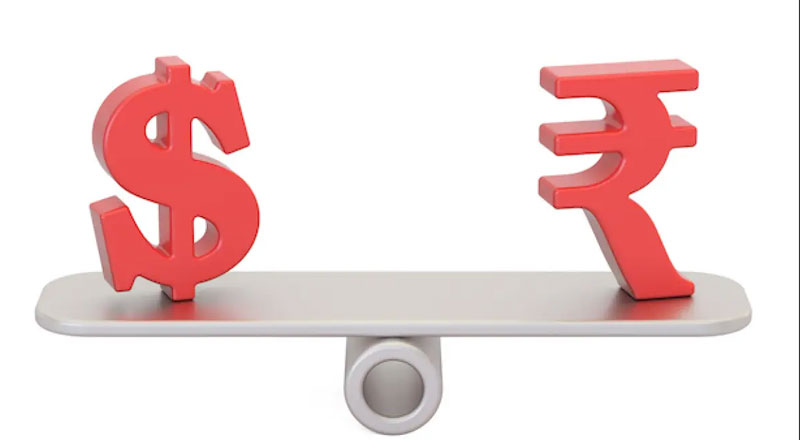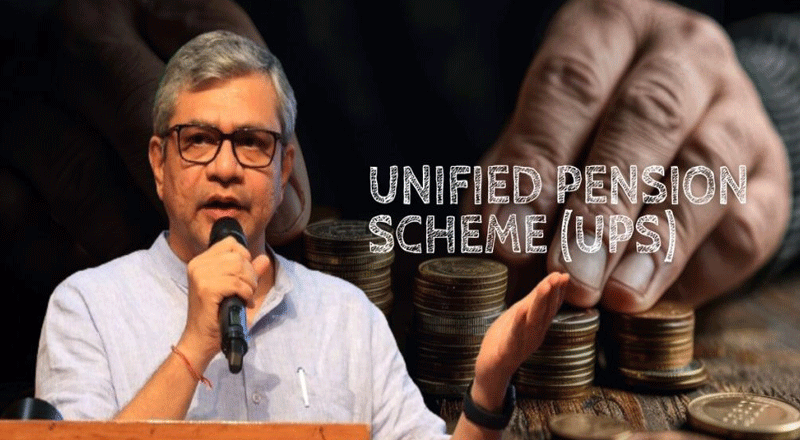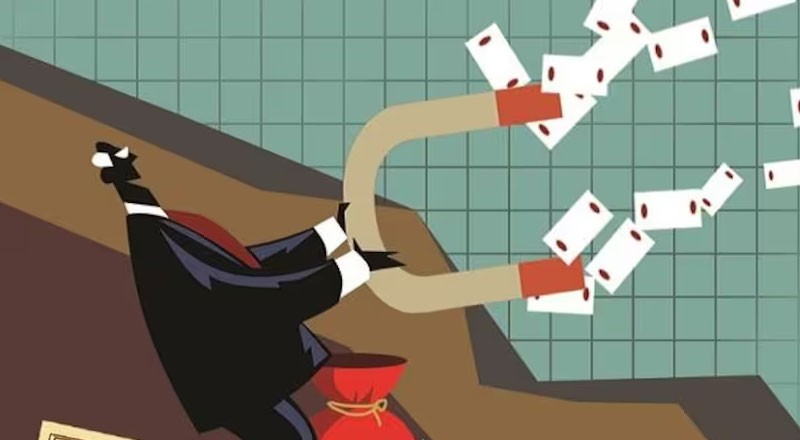The Indian currency is under pressure since the start of this year in view of the Russia-Ukraine war, and high crude oil prices, among other issues
he Indian rupee slumped 7 paise to an all-time low of 80.05 against the US dollar in early trade on Tuesday.
The impact? The import of items such as crude oil to electronic goods will get expensive, moreover, overseas education and foreign travel will also get costlier. This could worsen the inflation situation in the country.
The Indian currency is under pressure since the start of this year in view of the Russia-Ukraine war, and high crude oil prices, among other issues.
he government is keeping an eye on the movement of the domestic currency while the Reserve Bank of India (RBI) has also intervened to stem the further decline of the rupee but it looks like its depreciation is far from over.
What Will Be The Impact If Rupee Continues To Decline?
The initial impact of a depreciating rupee will be on the importers who will have to pay more for the products. However, the exporters are likely to gain from it as they receive more rupees in exchange for dollars.
The basket of Indian imports includes crude oil, coal, plastic material, chemicals, electronic goods, vegetable oil, fertiliser, machinery, gold, pearls, precious and semi-precious stones, and iron and steel.
A rise in the price of India’s main import item—crude oil—will expand the country’s current account deficit (CAD) since India imports around 85 per cent of the crude oil needed. Whenever oil prices see an uptick, they tend to pressurise the rupee as India’s import bills soar over higher crude prices.
This leads to a rise in the prices of raw materials and thus the selling prices. So, people have to pay more for buying the same goods.
What The RBI Is Expected To Do To Stall Rupee Depreciation?
The RBI is taking a series of measures to prevent further depreciation of the rupee. It may go in for a third consecutive interest rate hike as retail inflation continues to stay above 7 per cent.
The central bank has been selling dollars in the open markets and has heavily expanded its foreign exchange reserves to shield the rupee from a runaway depreciation. However, India’s forex reserves have depleted by $40.94 billion since February this year.
The RBI has also proposed the rupee settlement mechanism through which foreign companies can make payments in rupees instead of dollars. This is expected to reduce the need for dollars for foreign trade, stabilising its value.
Widening Current Account Deficit, Falling Forex Reserves
A report by the finance ministry cautioned that India’s CAD is expected to deteriorate in the current fiscal on account of costlier imports and tepid merchandise exports. Primarily driven by an increase in the trade deficit, the CAD stood at 1.2 per cent of GDP in 2021-22.
Since India imports around 85 per cent of its oil needs, a depreciating rupee will bloat the current account deficit.
When the CAD widens, India has to dip into its foreign exchange reserves to finance this deficit in the absence of dollar inflows by foreign investors in the country.
India’s merchandise exports in June jumped 23.52 per cent year-on-year (YoY) to $40.13 billion, while imports increased 57.55 per cent to $66.31 billion. The country’s trade deficit ballooned to a record of $26.18 billion, according to the latest official data released on Thursday.
The trade deficit stood at $9.60 billion in June 2021. Cumulative exports in April-June 2022-23 rose about 24.51 per cent to $118.96 billion, while imports increased 49.47 per cent to $189.76 billion during the period.
The country’s CAD is likely to touch $105 billion or 3 per cent of the GDP this fiscal, mainly due to the continuously widening trade deficit, according to a report.
“Although we continue to see Brent at $105 a barrel in 2022, higher non-oil, non-gold imports and lower exports are now likely to push CAD to 3 per cent at $105 billion, up from 2.6 per cent of GDP or $90 billion projected earlier,” Bank of America (BofA) Securities said in a report.
What Has Government Done So Far To Reduce The Impact On Common Man?
India’s retail inflation eased slightly to 7.01% in June against 7.04% in the previous month. The consumer price-based inflation (CPI) has breached the upper limit of RBI’s tolerance band, ranging from 2-6%, for the sixth consecutive month and has remained above 7% for the third consecutive month.
Soaring global commodity prices have kept retail inflation above the RBI’s 6% upper tolerance range so far this year. A weakening rupee has exacerbated the issue further. The currency is already down over 6% for the year due to higher oil prices – India’s biggest import.
The government responded to high inflation in the economy by announcing a series of steps to cool prices and cushion the impact on the common man.
To bring down inflation, the government has cut taxes on petrol and diesel and imposed restrictions on food exports. The government also reduced the import duty on key raw materials and inputs for the steel and plastic industry.
Will Indian Economy Sustain If Rupee Declines Further?
Finance Minister Nirmala Sitharaman last week said the Indian currency is relatively better placed than other global currencies against the greenback.
“We are relatively better placed. We are not a closed economy. We are part of the globalised world. So, we will be impacted (by global developments),” the finance minister said.
The falling rupee’s biggest impact is on inflation, given India imports over 80 per cent of its crude oil. Global crude prices have sustained at over $100 a barrel since Russia’s invasion of Ukraine in February this year. High oil prices and a weaker rupee will only add to inflationary pressures in the economy.
In May, the Brent crude touched $110 a barrel, which has now jumped to $122 per barrel.
The rupee has been on the decline since January this year, this erodes the purchasing power of the Indian currency in the international market.
Several analysts believe the domestic currency could decline further against the dollar in the next few sessions as oil prices go up and the FII sell-off continues.
India’s forex reserves are fast falling, and the rising trade deficit coupled with capital outflows is raising new risks for the rupee. India’s trade deficit widened in June as global crude oil prices surged even as exports slowed.
However, the Indian economy has shown resilience so far, but if the rupee does not stabilise, it would not be able to sustain it as it will keep on adding to inflation, and demand within the Indian economy will collapse.





